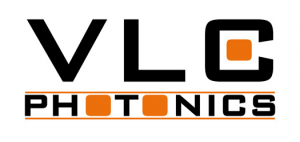MORPHIC Objectives
Wafer-scale silicon photonic MEMS technology – build on IMEC’s established iSiPP50G silicon photonics platform
Electronically controlled photonics MEMS circuits – build the essential electronic layer around the silicon photonic MEMS circuits
Programmable Photonic Integrated Circuits – create a platform for general-purpose, programmable photonic IC
High-level design methodologies – extend the existing iSiPP50G PDK with the functionality for the new building blocks
Validation of the technology platforms – 3 demonstrators for different applications that benefit from reconfigurability and large-scale integration

The MORPHIC project has received funding from the European Union’s Horizon 2020 research and innovation programme under grant agreement No 780283

MORPHIC Approach

The complexity of photonic integrated circuits (PIC) has steadily increased over the past decade. PICs combine many optical functions (wavelength filtering, modulation, photodetection) on a chip. Just like in electronic integrated circuits (IC), the functionality of a complex photonic circuit is as much determined by the number and the connectivity of its elements than by the performance of the individual building blocks. Silicon photonics is the only photonic integration technology that can support the required component density needed for a sustained scaling of complexity in photonic integrated circuits. This is enabled by the high refractive index contrast and the compatibility with high-end CMOS manufacturing processes. The high contrast between silicon and its oxide (SiO2) makes it possible to confine infrared light into a submicrometre optical waveguide and bend light with a < 5μm radius. Silicon photonic circuits are usually implemented on silicon on insulator (SOI), which is compatible with the fabrication processes used for CMOS electronics. This makes it possible to leverage an established high-volume manufacturing base. Because of these assets, silicon photonics research has grown exponentially over the past decade and is now experiencing industrial adoption with first products on the market. Today, this development is largely driven by datacentre communications and telecom, but silicon photonics is also proving its capabilities in (bio)sensor, microwave and spectroscopy applications.
Even with this rapid evolution, today’s silicon photonics technology suffers from two limitations that constrain the scaling of circuits:
o Variability: the high contrast of SOI makes the components extremely sensitive to nanometre-scale variations. Because of this, even the best processes are limited in the number of components in a circuit without suffering from mismatched response due to stochastic variations.
o Power consumption: while variations can be compensated by active tuning, the current technique of thermal tuning draws too much power to accommodate many tuning elements.
MORPHIC addresses these limitations by introducing micro-electro-mechanical systems (MEMS) into silicon photonic circuits. Photonic MEMS actuators provide the strongest possible electro-optic effect in on-chip technology, because they induce a physical change in the material distribution. Moreover, as MEMS work through electrostatic force, they have a very low power consumption. By adding mechanical latching mechanisms, MEMS become non-volatile, i.e. they maintain their state without power.
MORPHIC Vision
MORPHIC will develop Silicon Photonic MEMS technology that enables low-power, large-scale, and reconfigurable photonic integrated circuits with improved yield and better performance.











